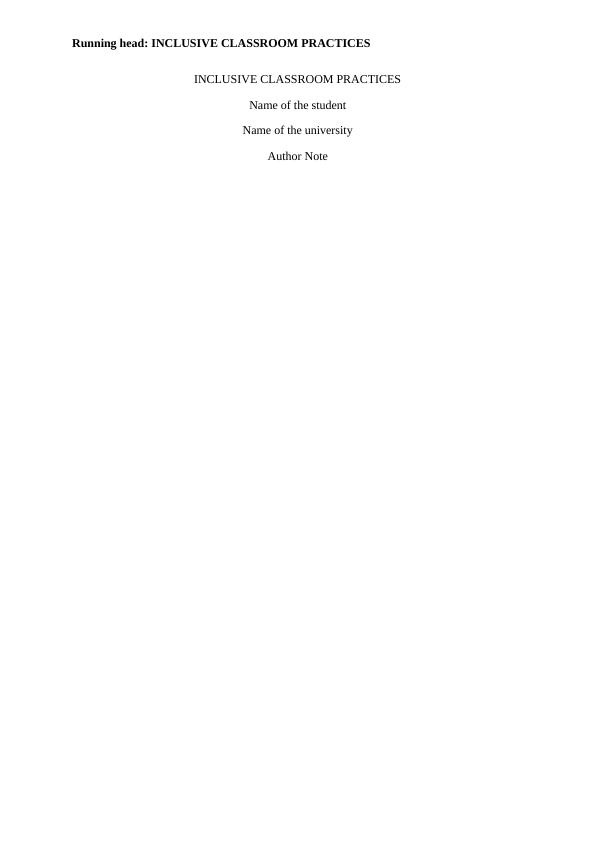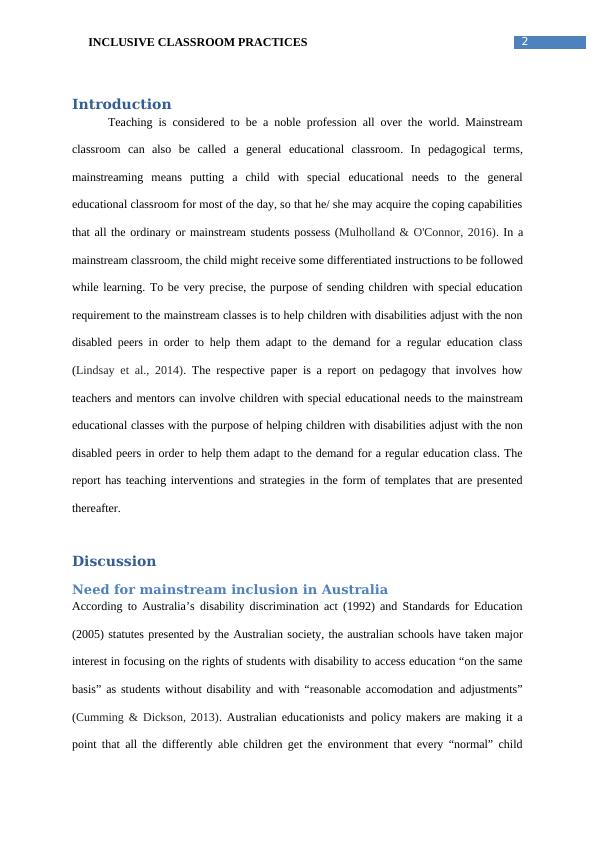Inclusive Classroom Practices | Report
Analyzing case studies and developing lesson plans to address inclusion for a diverse group of learners in a mainstream classroom.
8 Pages1789 Words20 Views
Added on 2022-08-31
Inclusive Classroom Practices | Report
Analyzing case studies and developing lesson plans to address inclusion for a diverse group of learners in a mainstream classroom.
Added on 2022-08-31
ShareRelated Documents
End of preview
Want to access all the pages? Upload your documents or become a member.
Scenario Analysis- Inclusive, Integrated or Segregated 2022
|9
|2130
|24
Inclusive Education in Saudi Arabia: Definition, Types, and Implementation Phases
|4
|1436
|400
Strength Based Inclusive Education
|14
|3813
|143
An Introduction to Inclusive Education Name of the University Author Note Introduction
|11
|3025
|224
Family Involvement & Reg Issues
|4
|780
|174
Literature Review : Effectiveness of Inclusive Education to Dyslexic Learners
|16
|5073
|413



